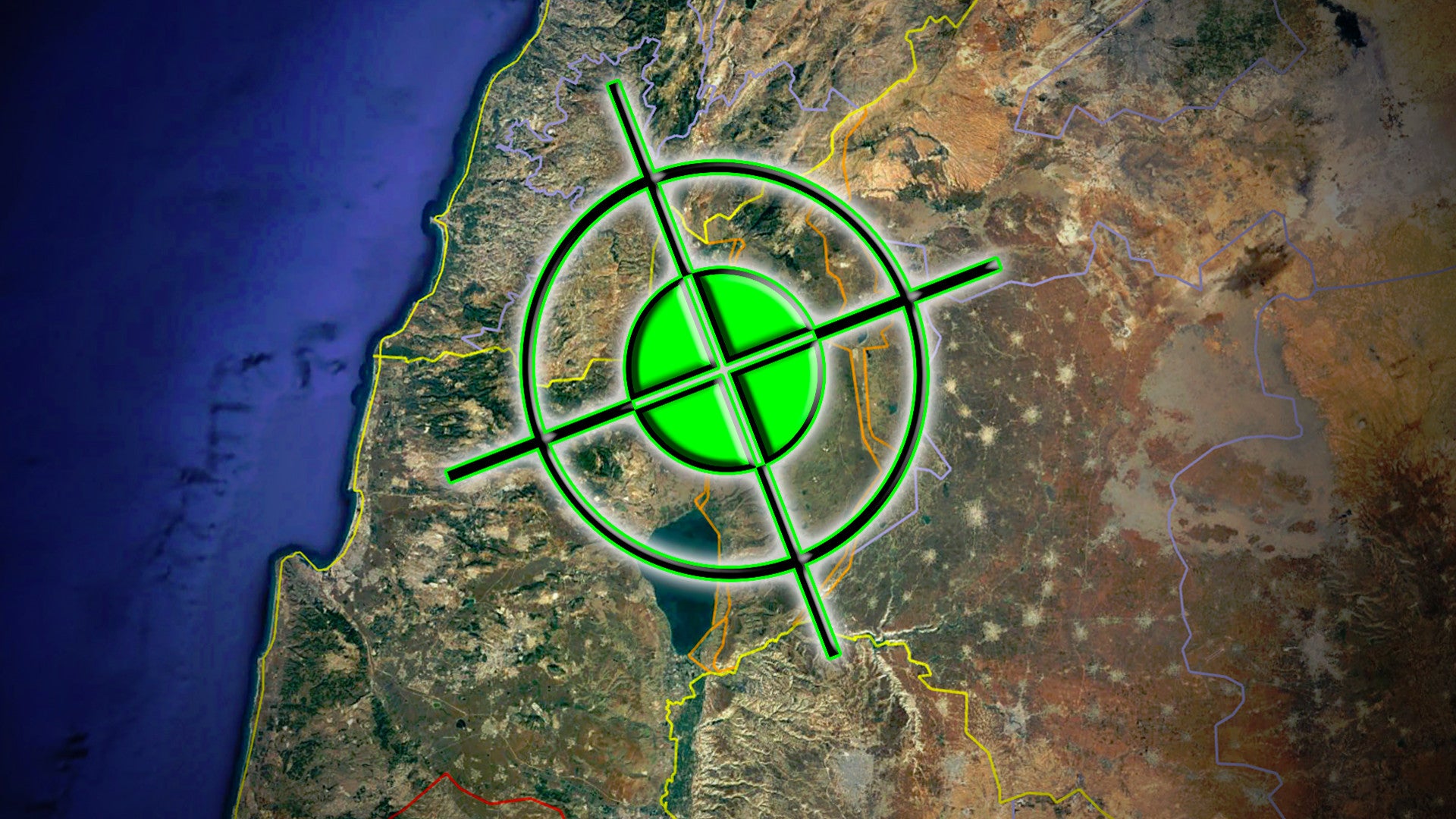Details are still emerging, but Israel says that areas of the Golan Heights that it occupies have come under attack directly from Iran’s Quds Force in neighboring Syria and that it retaliated, possibly by striking targets in the Syrian capital Damascus. The incident reflects the latest in a series of increasingly serious exchanges
between the two countries in the region and comes amid increased tensions following the United States’ decision to withdraw from a controversial deal regarding Iran’s nuclear program.
In the early hours local time in Israel on May 10, 2018, the Israel Defense Forces (IDF) confirmed that at least 20 unspecified rockets had landed in the Golan, but caused no injuries. Alert sirens reportedly went off in the Israeli communities of Majdal Shams, Neve Ativ, Nimrod, Masa’ade, Buqa’ata, Odem, and El Rom and Iron Dome systems fired an unknown number of interceptors and shot down at least some of the incoming projectiles. The attacks immediately followed reported Israeli artillery strikes on forces aligned with Syria’s dictator Bashar Al Assad, possibly Iranian-backed militias and their Iranian advisers, in the Syrian city of Baath in the Quneitra Governorate.
“The IDF sees this Iranian attack on Israel with severity,” IDF spokesperson Lieutenant Colonel Jonathan Conricus told The Times of Israel shortly after midnight on May 10, 2018. “This event is not over,” he stressed at the time.
“This was an Iranian event was a significant event and it will not be tolerated,” IDF Spokesman Brigadier General Ronen Manelis said, according to The Jerusalem Post. He made it clear there would be an Israeli response.
This response subsequently came in the form of additional Israeli stand-off strikes on targets in and around Damascus. After the already rare decision to name Iran as being behind the attacks in the Golan, Israel then publicly acknowledged it was striking Iranian targets inside Syria. Even more unprecedented, the IDF said Assad and his forces should not try to interfere with the retaliatory strikes or face an equally severe response. There were reports that Syrian Air Defenses had attempted to shoot down some of the incoming Israeli missiles.
Even before the skirmish in the Golan touched off the flurry of activity, Israel had already put the IDF on heightened alert after US President Donald Trump’s announcement that his administration would abandon the Iran Deal on April 8th, 2018. This reportedly included the call-up of certain reserve air defense and intelligence the day before.
At the same time, there had been reports that additional forces were moving toward the Golan in response to “suspicious activity” on the Syrian side of the border. The IDF told local authorities to open community bomb shelters as a precaution.
Though the immediate inciting incident does appear to be the Israeli strike on the targets in Baath, that is just the most recent in series of strikes by Israel against Iran and its interests in Syria, including proxy forces, such as the Lebanese militant group Hezbollah. On May 9, 2018, the Assad regime also blamed Israel for a separate operation that targeted an Iranian-controlled weapons depot within a Syrian military base in Kiswah, just south of the capital Damascus.
According to the Syrian Observatory for Human Rights, an independent U.K.-based monitoring group, those strikes killed at least eight members of Iran’s Islamic Revolutionary Guard Corps (IRGC) and another 15 pro-regime militiamen, including other third-party nationals. Many reports treat the IRGC and the Quds Force interchangeably, though the latter is an entity within the former organization primarily tasked with external operations.
The powerful quasi-military IRGC is distinct from the country’s military and officially exists to guard Iran’s supreme leader, presently Ayatollah Ali Khamenei, his overarching authority, and the Islamic Republic of Iran’s underlying theocratic system of government. As of October 2017, the U.S. government had designated both the Quds Force specifically and the IRGC as a whole as terrorist groups for their direct connection to Hezbollah in Lebanon and Hamas in Palestine, as well as their direct support for Houthi rebels in Yemen.
Since the beginning of 2018 alone, there have been more than a half a dozen major Israeli strikes
on Syrian targets or reported incidents involving the country’s forces operating in Syria. This tempo has steadily increased since April 2018 and shows no signs of changing any time soon.
But directly accusing the Quds Force of strikes into Israel represents a new and significant escalation in what had already been a low-level conflict between Iran and Israel in the region. In February 2018, Iranian forces in Syria launched a drone into Israeli territory, which Prime Minister Benjamin Netanyahu and other officials later said had been armed and on a strike mission of its own. That incident touched off a burst of counter-strikes that left one Israeli Air Force F-16I multi-role combat aircraft destroyed and one of its F-15s damaged.
There are also reports that the “rockets” that flew across the border from Syria were actually short-range ballistic missiles, which would also mark a major change in the nature of the fighting. In June 2017, Iran launched an unprecedented strike on ISIS terrorists using that class of weapon, Zulfiqar missiles specifically in that case, which we noted at the time could have also been a demonstration for the benefit of Israel and other potential opponents of its capabilities.
At the very beginning of May 2018, Iranian Defense Minister Amir Khatami had called on Israel to stop its “provocative actions” against the Islamic Republic. That followed Netanyahu’s elaborate show-and-tell presentation in which he accused Iran of lying about its nuclear ambitions.
“This is our warning to the regime occupying Jerusalem and its supporters – stop your dangerous behavior,” Khatami said. “The Iranian response will be surprising and you will regret it.”
Despite these and other threats, we are certain to see a stronger Israeli retaliation over Iran’s attacks in the near future, as well as a continuation of Israel’s broader campaign against Iran’s interests in Syria. However, these actions appear to now be prompting increasingly threatening Iranian responses. With all this in mind, what we’re seeing now seems to be the closest the two countries have come to entering into an all-out war.
We will continue to update this post as new information becomes available.
Update: 6:20pm PST— Clearly a major Israel response has been underway for some time now. Multiple waves of aerial attacks, most likely by standoff missiles, have been underway. Of course, Syrian government sources say most have been shot down by their air defense systems. Regardless, it looks like a wide variety of targets are being struck in multiple geographical areas. We may have to wait some time to get a better idea of just how extensive the target list was.
There are also reports of Russian fighters getting airborne to defend Damascus. These rumors seem to be par for the course now when Israel strikes, and it’s unlikely that Russia will intervene. Netanyahu was in Moscow today with Putin for Russia’s Victory Day Parade, clearly, the situation was discussed at that time.

Update: 6:40pm PST—
Looks like things are quieting down as dawn is approaching. These exchanges could become a very common occurrence in the coming hours and days though, with the big question being will it develop into a full-on sustained campaign/war?
Updated: 7pm PST—
Multiple outlets are reporting that the IAF hit Iranian related targets all over Syria in a massive counter-attack. At least one Syrian air defense site was also supposedly hit. The Times Of Israel states “the late-night Iranian rocket barrage and Israeli counterattack appeared to be the largest exchange in Syria since the 1973 Yom Kippur War.” We still don’t know the type of rockets fired into Israel. Some have said at least a few of the 20 projectiles were short-range ballistic missiles. There was ‘limited’ damage to Israeli bases as a result of the barrage which lends credence to the possibility that they were more advanced guided missiles than the basic ballistic artillery rockets traditionally used by groups like Hamas and Hezbollah. Israel and the U.S. have noted that Iran had been moving more advanced missile systems into Syria in as of late and the IAF had gone after those weapons on numerous occasions in recent weeks.
Update: 8:45pms PST—
The IDF has released an update on the operation, stating:
“The IDF is attacking dozens of military targets that belong to the Iranian Quds Force in the Syrian territory. In the framework of the extensive attack, Iranian intelligence sites operated by Quds Force were attacked:
- Logistic headquarters of the Quds Force.
- Military complex and the Quds Force logistics complex in Chisoua.
- An Iranian military camp north of Damascus.
- The weapon storage sites of Quds Force at the Damascus International Airport.
- Systems and Otsevi of intelligence associated with the Quds Force.
- Observation, military positions and weapons in the area of the barrier. The Iranian launcher was also destroyed from which the missiles were launched into Israel tonight.
The IAF was attacked by Syrian aerial defense batteries, which carried out firing at the Israeli warning. In response, the IDF has attacked several aerial intercept systems (SA-5, SA-2, SA-22, SA-17) belonging to the Syrian Army. Each Tosino to their base in peace.”
They also included this short video showing the MLRS launcher and where to traveled before being destroyed:
The inclusion of targeting multiple air defense sites could be the first sign that Israel is looking to establish a more robust long-term air campaign of sorts over Syrian territory. Dismantling key elements of Assad’s air defense network will allow IAF fighters to move to making more high-volume direct attacks once again on Iranian-related sites in Syria.
Contact the author: Tyler@thedrive.com
